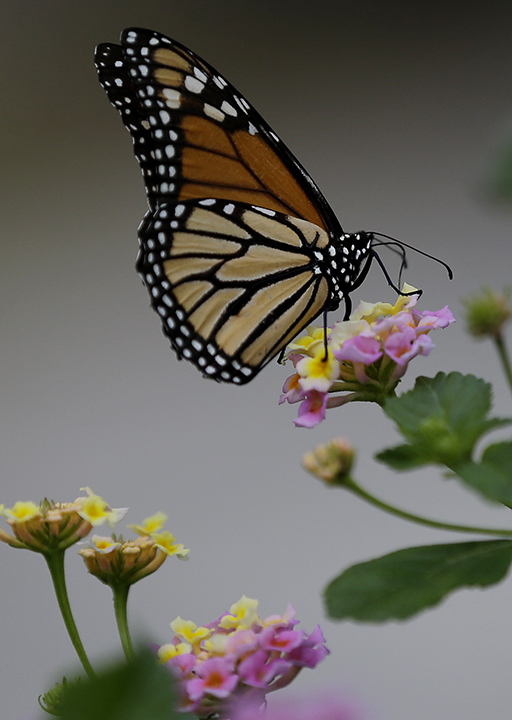
By Ramit Plushnick-Masti
Associated Press
A half-century ago, Monarch butterflies — tired, hungry and bursting to lay eggs — found plenty of nourishment as they migrated from Mexico through Texas. Native white-flowering balls of antelope milkweed covered grassland areas, growing alongside other nectar-filled flowers.
But now, these orange-and-black winged butterflies find mostly buildings, manicured lawns and toxic, pesticide-filled plants after crossing the Rio Grande. Already hampered by disappearing habitat in Mexico, years of drought and almost no sustenance farther north in the Great Plains, the Monarch is getting help as a Texas state agency is preserving ecosystems and nonprofits are offering grants and rare plant seedlings to boost habitat.
“They are worn out. They’re stumbling into Texas and they’re laying eggs with their last gasp,” said Charlotte Reemts, an ecologist with The Nature Conservancy, explaining that milkweed is crucial food in the caterpillar’s transformation into a butterfly. “The caterpillars would have nothing to eat so it’s really important to have milkweed in Texas.”
That is the idea. If homeowners devote small areas of their yards to native plant species, Reemts said, it will help Monarchs, as well as other insects and pollinators such as bees.
“If you look, particularly at the San Antonio to Dallas corridors, there is very little area that is not developed,” Reemts said, noting Central Texas was once covered with prairies and grasslands, of which only about 1 percent remain. “So anything that’s migrating up this corridor the only habitat available to them is your backyard.”
Pretty lawns aren’t habitat.
“One garden won’t make a difference, but 100 gardens will,” Reemts added.
Debbi Harris, who oversees the Milano Junction Memorial Garden in Milano, used her $200 grant to plant a Monarch way-station in a vacant lot. By selling wildflower seeds and spreading information about milkweed’s importance, Harris has two other areas interested in planting Monarch gardens.
“What I’ve done is just started a fire, a small one, but it’s gotten two other counties interested in starting their own project,” Harris said.



